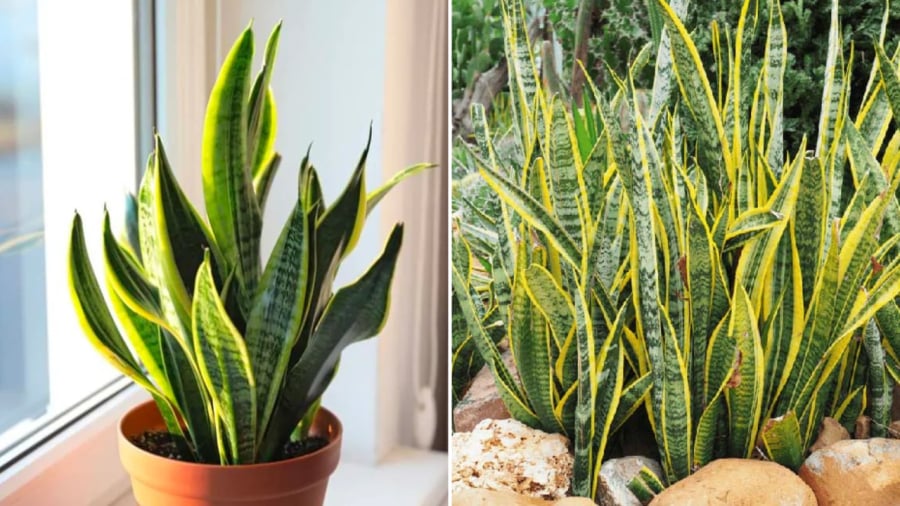Tiger tongue plant has thick, long, straight leaves. The leaves have beautiful green and white or yellow stripes. This type of plant is easy to grow, cold-resistant, and has a high ornamental value. The plant prefers a semi-shaded environment, making it suitable for indoor planting.
The tiger tongue plant can also absorb harmful gases, especially formaldehyde and dust in the air. Growing tiger tongue plants indoors helps purify the air, supporting the health of family members.
There are many types of tiger tongue plants, but the care techniques are similar. When growing tiger tongue plants, you need to pay attention to the following points.
Regularly change soil and pots
After a period of time, the soil in the pot will no longer be loose and will also lose nutrients, and the soil is easily compacted. In addition, the large plant growth will make the area of the pot become smaller. This is when you need to change new pots and new soil for the plant. The plant can be divided into many small pots or larger pots can be used to plant the plant.
When changing the soil, mix in more nutritious soil, humus soil, and decomposed organic fertilizer into the soil. Loose, well-drained, nutrient-rich soil will help the tiger tongue plant greener, grow faster, and produce more new branches.

Tiger tongue plants are very easy to grow and care for.
Let the plant exposure to moderate light
Many people think that tiger tongue plants have the ability to withstand shade well and always place plants indoors, not exposing them to natural light. In fact, tiger tongue plants prefer diffused light and cannot tolerate direct strong sunlight. If the plant is kept in the shade for a long time, the plant will not develop well and will not grow new shoots. The lack of light environment also makes the leaves of the plant soft, no longer stiff, and the veins are also faint.
Therefore, you should place the plant in a place where it can receive diffused light such as near a window or after keeping the plant indoors for 1 month, then bring the plant outdoors for 1-2 weeks before bringing it back indoors. Note, when placing outdoors, place the plant in a place with moderate light and not in direct sunlight to wilt the leaves.
Pay attention to watering
Watering the plant also needs attention. Tiger tongue plants are drought tolerant, so they do not need to be watered too often. Excess water will cause the roots to rot.
When growing indoors, you only need to water the plant once a week. Water will be poured into the soil, not poured into the middle of the leaves to cause the leaves to rot. For outdoor plants, you should avoid letting the plant be “bathed” in rain for a long time, causing water to accumulate in the soil and leaf crevices, causing the plant to rot.
You can observe the soil in the pot to decide when to water the plant. If the soil is dry, add water. If the soil is still moist, do not add more water.
Lucky charms by your bedside bring continuous fortune and overflowing abundance
According to Feng Shui beliefs, placing these objects at the head of the bed will bring good luck to the family.




































